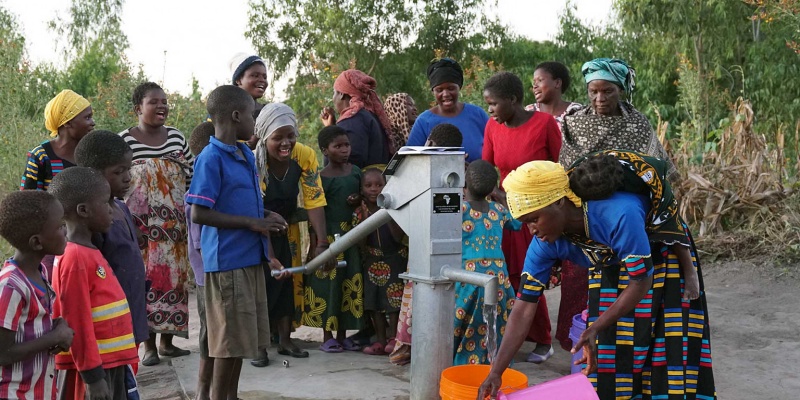Using Data to Increase Access to Water for Shared Prosperity in Africa

Data will play an invaluable role in helping public and private sector stakeholders across Africa identify ways to increase access to water for all while managing this commodity. From climate and weather forecasting to water monitoring, measuring, demand forecasting, and predictive maintenance on infrastructure, understanding data becomes a key tool in accomplishing water access.
Managing the unpredictable
Take disaster management as an example. Municipalities are at risk of flooding from both natural and unnatural events. Whether it is rain, tidal surges, or water main breaks, the complexities of being prepared for floods in the event of a disaster are significant. Further compounding this is climate change, cloud seeding, population growth, concretisation of the urban areas with poor drainage systems and expanding urbanisation in rural areas. Flood risks in urban areas pose significant challenges, leading to severe losses in terms of human lives, infrastructure, vehicles, and biodiversity. These events can cause widespread devastation, disrupting communities and economies. The impact extends beyond immediate damage to buildings and roads, affecting ecosystems and natural habitats as well. Addressing flood risk in cities requires comprehensive strategies that prioritise both human safety and environmental resilience, emphasising the importance of proactive planning, infrastructure improvements, and sustainable development practices.
Leveraging cloud-based AI technology with sensor data and drone camera feeds presents a promising avenue for mitigating various flood-related risks. By facilitating efficient flood response management, this approach enables municipalities to better address the challenges posed by flooding. Solar-powered sensors and drones, coupled with cloud-based predictive analytics, offer real-time spatial situational awareness, allowing authorities to monitor flood severity and hazard indicators promptly. Critical data, including damage extent, flood depth, flooding arrival time, flooding duration, sediment or contamination load, water height, and flow rates, are transmitted back to the cloud via cellular communications. This telemetry and video feed are then integrated with weather data and predictive models are built that decides a specific response, enhancing the overall flood monitoring and response capabilities.
Machine learning and artificial intelligence (AI) techniques can forecast potential flooding incidents, identify risk zones, attach risk scores to properties, infrastructure, and vehicles, and notify response teams proactively. This data can be incorporated into a mobile application integrating real-time decisioning with historical data, alert notifications, predictive summaries, and key statistics, aiding municipalities and local city administration in optimising their action plans.
Real-world applications
In the Netherlands, the agency in charge of Dutch public works, roads and water management is placing advanced IoT sensors throughout the country’s numerous rivers and inlets monitoring data from bridges, dams, dikes, locks and storm surge barriers. This is empowering the department to harvest, analyse, and act on real-time insights generated from AI and advanced analytics connected to these sensors. Application of AI helps them understand how many miles of highways are still operational due to rising water level and plan for adequate sand inventory at the required site.
Additionally, one of the largest cities in Southeast Asia is using AI, machine learning and streaming analytics, on rainfall, water levels and river flow to better predict and mitigate flooding. Even in smaller communities such as Cary in North Carolina, city leaders are using similar IoT-enabled tools, analytics, and technologies to help protect citizens and local watersheds from stormwater drain flooding due to continuous heavy rains.
Taking care of maintenance
From a predictive maintenance perspective, the integration of data and city digital twins can yield significant benefits. As the name suggests, a digital twin is a virtual representation of a physical part, product, plant, or process.
City digital twins, integrated with cutting-edge AI technologies, are revolutionising flood response management with a focus on predictive maintenance. By constructing virtual replicas of urban landscapes, these digital twins facilitate in-depth modelling and simulation of flood scenarios. Predictive maintenance algorithms analyse this wealth of information to anticipate vulnerabilities in infrastructure systems such as drainage networks, levees, and pumping stations. By identifying potential points of failure before they occur, predictive maintenance strategies enable proactive interventions, ensuring that infrastructure remains operational and resilient in the face of flooding events. This proactive approach not only enhances the effectiveness of flood response efforts but also minimises downtime and repair costs, ultimately fostering greater urban resilience.
Sharing data
For data to be used as effectively as possible, municipality and city administration departments need to adopt open data sharing as much as possible. For instance, if there is an overlap in scope between the check dams, roads, stormwater and the transportation team, these units need to coordination to optimise resources and help execute the most optimal plan. This becomes especially significant during crisis times such as flooding or major infrastructure problems.
By using a central hub of data and analytics insights, municipalities can link critical city and rural administration and remote teams better. Benefitting from the same data, they can take a more connected approach to disaster management and water resource optimisation.
Harnessing the power of data is therefore an essential component in dealing with the pressing challenges surrounding water access and management in Africa. As the continent grapples with the complexities of climate change, population growth, urbanisation, and the compounding impact these have on available and planned infrastructure, the integration of data analytics, IoT sensors, and AI will be transformative in promoting and safeguarding access to water for all and well into the future.
By Satyajit Dwivedi,
Regional Director, EMEAP, Energy Utilities, Mining & Metals, Public Sector, SAS.
